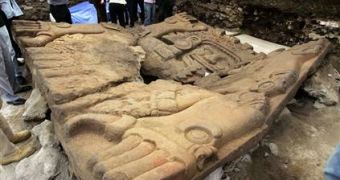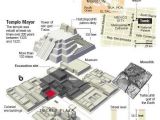This could be one of the most important discoveries of all Aztec archaeology: ground-penetrating radars have found underground chambers that could be the tomb of Emperor Ahuizotl, who ruled the Aztecs when Columbus reached the New World.
This find is the first of its type and would offer a great opportunity to envisage the Aztec civilization at its highest point. Ahuizotl conquered territories as far as Guatemala and was the last Aztec emperor to complete his rule before the Spanish arrival. Spanish records reveal the area was used by the Aztecs to cremate and bury their rulers.
But as the Spanish built their own city over the Aztec one, they left behind colonial structures too historically valuable to demolish for excavations. But a 1985 earthquake damaged severely one of the Spanish buildings, offering the first opportunity to examine the site off Mexico City's Zocalo plaza, between the Metropolitan Cathedral and the ruins of the Templo Mayor pyramid.
Archaeologists told The Associated Press that they have spotted what could be a 6ftx6ft (2mx2m) entryway into the tomb located 15 ft (5 m) underground. The entry is blocked with water, rocks and mud. Water pumps work to maintain a low level of the water.
"We are doing it very, very slowly ... because the responsibility is very great and we want to register everything," said Leonardo Lopez Lujan, the lead government archaeologist on the project.
Ahuizotl was likely incinerated on a funeral pyre in 1502, but even if 10 years earlier Columbus had landed in Central America, the Aztecs' first contact with Europeans occurred 17 years later, in 1519, when Hernan Cortes and his Spanish conquistadors entered the Mexico Valley and took hostage Ahuizotl's successor, his nephew Montezuma. In two years Mexico became a Spanish colony. Montezula was killed by the Spanish, but his burial place is unknown.
Radar showed the tomb has up to four chambers and should be repleted with offerings to the gods.
"He must have been buried with solemn ceremony and rich offerings, like vases, ornaments ... and certainly some objects he personally used," said Luis Alberto Martos, director of archaeological studies at Mexico's National Institute of Anthropology and History.
"The constant temperature of the pH-neutral water in the flooded chambers, together with the lack of oxygen, discourages decomposition of materials like wood and bone that have been found at other digs around the pyramid, which was all but destroyed in the Conquest," said Lopez.
"This would be quite an important find for Aztec archeology. It would be direct information about kingship, burial and the empire that is difficult to come by otherwise." said Michael Smith, an archaeologist at Arizona State University, not involved in the dig.
The tomb was located under a recently discovered huge monolith with a relief depicting Tlaltecuhtli, the Aztec god of the earth. The god holds with the claw of his right foot a rabbit and 10 dots: "10 Rabbit" means 1502, the year when Ahuizotl died.
"Our hypothesis is precisely that this is probably the tomb of Ahuizotl," said Lopez.
Mexico has unsuccessfully attempted to recover Aztec artifacts like the feather-adorned "shield of Ahuizotl" and the "Montezuma headdress", now at the Ethnology Museum in Vienna, Austria.
"The Aztecs were the most powerful society of their time before the arrival of the Spaniards. That's why Ahuizotl's tomb down there is so important," said Martos.

 14 DAY TRIAL //
14 DAY TRIAL // 
